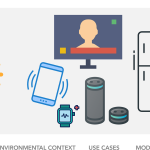
TypeScript for Microcontrollers: Unveiling IoT Potential with Cutting-Edge Innovations
- Post
- August 7, 2023
- JavaScript, TypeScript, Web Development
- 0 Comments
Welcome to our comprehensive guide on leveraging TypeScript for microcontrollers to unlock the vast potential of the Internet of Things (IoT). In this article, we will delve into TypeScript’s powerful features, explore its compatibility with microcontrollers, and highlight the latest innovations that enable seamless integration in the world of IoT. Embrace this journey as we embark on a path that will revolutionize how microcontrollers and IoT devices interact, ushering in a new era of efficiency, reliability, and creativity.
TypeScript: An Overview
TypeScript, developed by Microsoft, is a statically typed superset of JavaScript that enhances the language with optional static types. By introducing a robust type system, TypeScript enables developers to catch errors early in the development process, leading to more reliable and maintainable code. The TypeScript compiler transpiles the code into plain JavaScript, ensuring compatibility across all modern browsers and platforms.
Advantages of TypeScript for Microcontrollers
Strong Typing and Code Safety
One of the most significant advantages of TypeScript for microcontrollers is its strong typing system. With TypeScript, developers can define variable types explicitly, reducing the likelihood of runtime errors. This aspect is especially crucial in resource-constrained environments like microcontrollers, where debugging and updates can be challenging.
Increased Maintainability
TypeScript’s static typing and object-oriented features contribute to code readability and maintainability. As projects grow in complexity, TypeScript’s ability to structure code with classes, interfaces, and modules makes it easier to manage and collaborate on large-scale IoT applications.
Enhanced Tooling and IDE Support
TypeScript integrates seamlessly with popular integrated development environments (IDEs) like Visual Studio Code, providing developers with powerful code completion, refactoring, and navigation features. The comprehensive tooling support aids in faster development and debugging cycles, improving productivity.
Strong Ecosystem and Community Support
The TypeScript community is vibrant and continually growing. The active development and extensive third-party library support offer developers access to a wealth of resources, making it easier to implement sophisticated functionalities in IoT projects.
TypeScript for Microcontrollers: Types and Operators
TypeScript’s Rich Type System
TypeScript supports various data types, including number, string, boolean, and more. Additionally, it allows developers to define custom types using interfaces and enums, providing flexibility and clarity in defining data structures.
Operator Overloading in TypeScript
TypeScript allows operator overloading, enabling developers to define custom behaviors for operators such as +, -, *, and /, among others. This powerful feature allows for more concise and expressive code when working with microcontroller applications.
TypeScript Tutorial: Building IoT Applications
Setting Up the Development Environment
Before diving into building IoT applications with TypeScript, we need to set up the development environment. Install Node.js, TypeScript, and any relevant microcontroller-specific SDKs or tools to get started.
Writing a TypeScript Microcontroller Application
In this tutorial, we’ll create a simple IoT application using a microcontroller and TypeScript. We’ll cover setting up GPIO, reading sensor data, and interacting with external devices. This hands-on project will help you grasp the fundamentals of TypeScript for microcontrollers.
Integrating TypeScript with IoT Protocols
MQTT Communication
MQTT (Message Queuing Telemetry Transport) is a widely-used lightweight messaging protocol for IoT applications. TypeScript’s support for MQTT libraries makes it easy to implement real-time communication between microcontrollers and IoT cloud platforms.
CoAP Integration
Constrained Application Protocol (CoAP) is another popular IoT protocol suitable for resource-constrained devices. TypeScript offers libraries and tools to facilitate seamless CoAP integration, expanding the possibilities for microcontroller-based IoT applications.
Leveraging TypeScript’s Ecosystem for IoT
Using Third-Party Libraries
TypeScript’s compatibility with popular JavaScript libraries and frameworks allows developers to leverage existing tools for building IoT applications. Whether it’s data visualization or machine learning, TypeScript’s extensive ecosystem has solutions for various IoT requirements.
Exploring the Power of WebAssembly
WebAssembly (Wasm) allows running high-performance code on microcontrollers, enabling resource-intensive tasks to be offloaded from the main processor. TypeScript’s compatibility with WebAssembly unlocks new opportunities for implementing complex IoT functionalities.
Final Words
In conclusion, TypeScript for microcontrollers offers a potent combination of type safety, maintainability, and powerful tooling that significantly enhances IoT development. Embrace this innovative technology to unlock the true potential of IoT and build robust, efficient, and scalable microcontroller-based applications.
Commonly Asked Questions
Q1: Can TypeScript be used with any microcontroller?
Yes, TypeScript can be used with most microcontrollers that support JavaScript or can be transpiled to JavaScript. However, it’s essential to verify compatibility with specific microcontroller platforms.
Q2: How does TypeScript improve IoT application security?
TypeScript’s strong typing system and compile-time checks help catch potential security vulnerabilities early in the development process, reducing the risk of exploitable code in IoT applications.
Q3: Is TypeScript suitable for real-time applications on microcontrollers?
TypeScript is well-suited for real-time applications on microcontrollers, especially when paired with efficient libraries and optimized code.
Q4: Can TypeScript be used with low-power microcontrollers?
Yes, TypeScript can be used with low-power microcontrollers, provided that the target device has enough resources to run the transpiled JavaScript code.
Q5: What makes TypeScript a better choice than vanilla JavaScript for IoT projects?
TypeScript’s static typing, strong ecosystem, and compatibility with modern IDEs make it a more reliable and maintainable choice for building complex IoT applications compared to traditional JavaScript.




